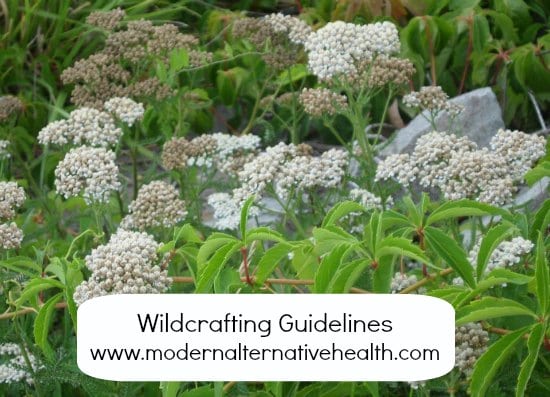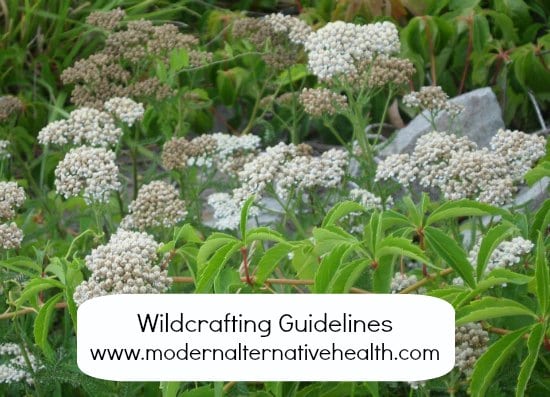By Amanda Klenner-Labrow, Contributing Writer
There is a saying that you will hear a lot when you hang around herbal circles. “Everything you need is growing in your back yard.” This is a greater back yard. Obviously my little backyard does not have all the herbs I need to live BUT if I go just a few miles out of my way into open spaces I can find many of my herbal and botanical needs right on my door step.
The act of going out and harvesting your own herbs and botanicals locally is called Wildcrafting. Wildcrafting is something people have been doing for ages. In hunter gatherer societies this was traditionally women”s work. A woman can go out and harvest plants as she needs to feed the family while the man is out hunting. It is easy to wildcraft with kids around, and a great teaching opportunity for children. You can teach them to respect nature, give thanks to the plant for giving its life for us to live, and teach them what herbs are safe, and what to avoid.
Wildcrafting Guidelines
- Always ask permission if you are harvesting on private land. If you do not ask permission you are trespassing! The owner of the land might have plans for those herbs. Be respectful and ask. If you are on public land it is fair game. Colorado has a lot of open spaces that are great for wildcrafting.
- Know your herbs! Always know your herbs and be able to properly identify them. Have a herbal guide book for your area to help identify the plant. when in doubt do not harvest it! This is one of the benefits of technology, I have checked my smart phone many times when wild crafting to be sure I properly identified a species.Check with your local herbal stores or botanical gardens for herb walks. Locally in Colorado the Center for Botanical Studies has several classes on identifying and using local plants for medicinal herbs and food.
- Have the right tools! Bring gloves, scissors or a pruning tool, a trowel, a root weeder, a multi-tool, a basket to put your herbs in, a plastic bag or container to put plant samples in for plants you would like to try to properly identify, a first aid kit, and maybe a hat to protect you from the sun.
- Be sure your herbs are free of pollutants. Do not harvest within 10 feet of a road or free way. Do not harvest near farm land (unless you know it is pesticide free and has been for a long time). City parks and municipal areas are usually sprayed with herbicide a few times a year at least. Plants may not show signs of being sprayed until days after the application so be wary.
- Be sure the herbs are not endangered in your area. You can check United Plant Savers and the US Forest and Wildlife servicefor endangered plants in your area.
- Do not over harvest. Take only what you need. Be sure there are plenty of plants around to propagate the species. If there are only one or two plants in the area, leave them be, they need to spread their seed to grow more plants and maintain the biodiversity of the area. You will find, after building a relationship with the plants, that they almost speak to you, letting you know if they can be harvested, or would like to be left alone.
- Give thanks to the plant and be grateful for its sacrifice. If you are taking the whole plant or the root, thus killing the plant, consider bringing seeds to replant in the area to maintain the life and biodiversity of the area.
Here is a wonderful and more detailed wildcrafting ethics checklist.
By wildcrafting you are insuring the freshest and most potent herbs you can find locally for little to no cost to you. My favorite plants to start wildcrafting are dandelions and plantain. They are easy to identify, safe, copious, and you can find them just about everywhere.
As always, when using herbs take into account basic herbal medicine safety considerations.








Hey! Thank you so much for this article- it is excellent and informative and just what I was scowering for-
(This is a sidebar):
I just had to pause in reading tho at the part about hunter-gather human history and sex-roles to comment that — this is not actually paleoanthropologically true, ESPECIALLY in regards to spear-slain animals. Women and men (hominids) each have specific physiological strengths and weaknesses that like our larger scale industrial (specialized) society will be employed for and adapted to a wide variety of tasks and occupations, and is influenced directly by the environment, season, cultural/societal practices & frameworks, individuality, community needs, and activity factors. (Ie. women are generally more adapt by means of things like smaller hands and different centers of gravity, to refined tasks (Carving/weapon making, crafts, arts, spear throwing & certain specialized weapon use, and arguably via fertility cycles- rituals & things like innate knowledge of natural cycles (like calendars)) than male physiology might be, which generally carries more brute force, top-heavy strengths, and different time availability demands (in terms of things like the groups/experiences related to menstruation, pregnancy, and child nurturing/protection). Though this is slowly changing in the information age- the things we learn(ed) through childhood textbooks / lessons and things like nat.geo generally have almost everything to do with the contemporary cultural atmosphere and assumptions of reality than they do the realities of prehistoric human life, practices, and actual archaeological records, evidence, & studies –annnd are often deeply influenced by the life experience, nostalgia, desires, and both conscious and unconsciousness of executives and those in privileged power roles.
Wildcrafting has never necessarily been women’s work (actually women may have been busier doin other things)–Rather it has always been Human’s work.
Okay mini-paleoarchaeological ramble over–Off topic but something I personally think is incredibly important and relevant and worth spreading.
~Thank you so much again for this article!